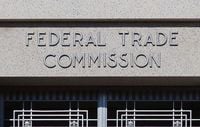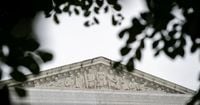On September 22, 2025, the U.S. Supreme Court ignited a fierce debate over presidential power and the independence of federal agencies, temporarily allowing President Donald Trump to fire Federal Trade Commission (FTC) Commissioner Rebecca Kelly Slaughter. The move, which came via an emergency order, sets the stage for a high-stakes legal showdown this December—one that could upend nearly a century of precedent and fundamentally alter the balance of power between Congress and the White House.
The dispute traces back to March 2025, when President Trump dismissed both Slaughter and fellow Democratic commissioner Alvaro Bedoya from the FTC. Bedoya, facing mounting financial pressures, ultimately resigned, but Slaughter chose to fight back. She sued, arguing that her removal violated the 1935 Supreme Court decision in Humphrey’s Executor v. United States, a landmark case that has long shielded members of independent agencies from being fired by the president without cause.
According to The Washington Post, the FTC is designed to function with a degree of bipartisan oversight, typically comprising five commissioners—three from the president’s party and two from the opposition. Congress established this structure to ensure the agency’s independence and to prevent it from becoming a partisan tool. The law stipulates that commissioners can only be removed for “inefficiency, neglect of duty, or malfeasance in office.”
But Trump’s administration has argued that such protections are unconstitutional, claiming they infringe on the president’s executive authority. In court filings, Solicitor General D. John Sauer maintained that “the FTC had changed in recent decades, amassing considerable executive power in the intervening 90 years,” and that the president must have the ability to remove agency leaders at will. The administration further contends that courts lack the power to reinstate commissioners once they have been fired.
Slaughter’s legal team, however, has been steadfast in its reliance on the 1935 precedent. “Ninety years ago, this court was tasked with deciding whether the president may fire a commissioner of the Federal Trade Commission without cause,” they wrote in a brief to the justices. “The court ruled that he may not.” They warn that a decision to side with Trump would “severely wound and radically transform” the agency Congress created.
Initially, Slaughter found support in the lower courts. In July 2025, Judge Loren L. AliKhan of the U.S. District Court for the District of Columbia ruled in her favor, declaring her firing unlawful and reinstating her as a “rightful member” of the agency. The U.S. Court of Appeals for the District of Columbia Circuit upheld this decision in early September, emphasizing that the president had acted without the legally required grounds.
Yet, the Trump administration quickly appealed to the Supreme Court, seeking an emergency stay. On September 8, Chief Justice John Roberts issued an order temporarily allowing Trump’s firing of Slaughter to stand while the justices considered the broader legal questions. This latest order, issued on September 22, not only kept Slaughter out of her role but also signaled the Court’s willingness to revisit—and possibly overturn—the 90-year-old Humphrey’s Executor precedent.
The Court’s decision was not unanimous. The three liberal justices—Elena Kagan, Sonia Sotomayor, and Ketanji Brown Jackson—issued a pointed dissent. Justice Kagan, writing for the trio, lambasted the majority’s use of the emergency docket, arguing that it should not be a vehicle for upending established precedent or for “transferring government authority from Congress to the president, and thus to reshape the nation’s separation of powers.” She warned, “He may now remove—so says the majority, though Congress said differently—any member he wishes, for any reason or no reason at all. And he may thereby extinguish the agencies’ bipartisanship and independence.”
Kagan’s dissent echoed concerns raised by legal scholars and commentators, who see the Court’s recent actions as part of a broader pattern. As The New York Times noted, the conservative majority has “all but overturned that precedent in recent rulings,” allowing Trump to dismiss Democratic members of other independent agencies, including the National Labor Relations Board (NLRB) and the Merit Systems Protection Board (MSPB), without cause. In each case, the Court’s emergency orders have allowed removals to proceed, even as the underlying legal questions remain unresolved.
The stakes could hardly be higher. The Supreme Court’s decision to grant “cert before judgment”—agreeing to hear the case before the appeals process had finished—underscores the urgency and significance of the issue. The justices have agreed to consider two central questions: whether statutory protections against removal violate the separation of powers, and whether the Court should overrule Humphrey’s Executor altogether. They will also weigh whether federal courts even have the authority to prevent or reverse such removals.
Observers across the political spectrum are watching closely. Some argue that allowing presidents to fire independent agency leaders at will would make these bodies mere extensions of the executive branch, undermining their ability to act as nonpartisan watchdogs. Others, including the Trump administration, see the current restrictions as unconstitutional shackles on presidential authority, preventing elected leaders from ensuring accountability within their own administration.
The outcome could ripple far beyond the FTC. As SCOTUSblog and Bloomberg Law have reported, the 1935 decision in Humphrey’s Executor has served as the cornerstone for the independence of a host of federal agencies, from the Consumer Product Safety Commission to the Federal Reserve. Should the Supreme Court overturn or sharply limit that precedent, presidents—now and in the future—could gain sweeping new powers to reshape the federal bureaucracy to fit their own agendas.
For now, Rebecca Slaughter remains out of her post, and the FTC is left without its last Democratic commissioner. Oral arguments in Trump v. Slaughter are set for December, with a final decision expected by summer 2026. The legal and political world will be watching as the justices weigh whether to preserve a delicate balance between executive power and agency independence, or to hand the president a historic expansion of authority.
The coming months promise a defining chapter in the ongoing struggle over who truly holds the reins of government in Washington.

